Farm Life Journal - May 2018
May 2, 2018
By Darcy Maulsby
Greetings from Calhoun County!
Finally! Fieldwork is underway here on our farm. In fact, tractors, field cultivators, sprayers and planters are rolling all over Calhoun County and beyond. We’ve been busy applying nitrogen fertilizer to help feed the 2018 crop.
Feeding a crop is just like feeding a growing family — it takes the right nutrients in the right amounts to promote growth and healthy development. Plants require three basic macronutrients — nitrogen, phosphorus and potassium. Farmers often refer to these as N, P, K.
We use tools like soil sampling to learn what nutrients are abundant or lacking in our fields so we can apply the right amount of fertilizer. We have no desire to over-apply nutrients because we want to be good stewards of the land. Efforts like this helped us earn an Iowa Environmental Leader Award at the Iowa State Fair a few years ago — an honor we were humbled to receive.
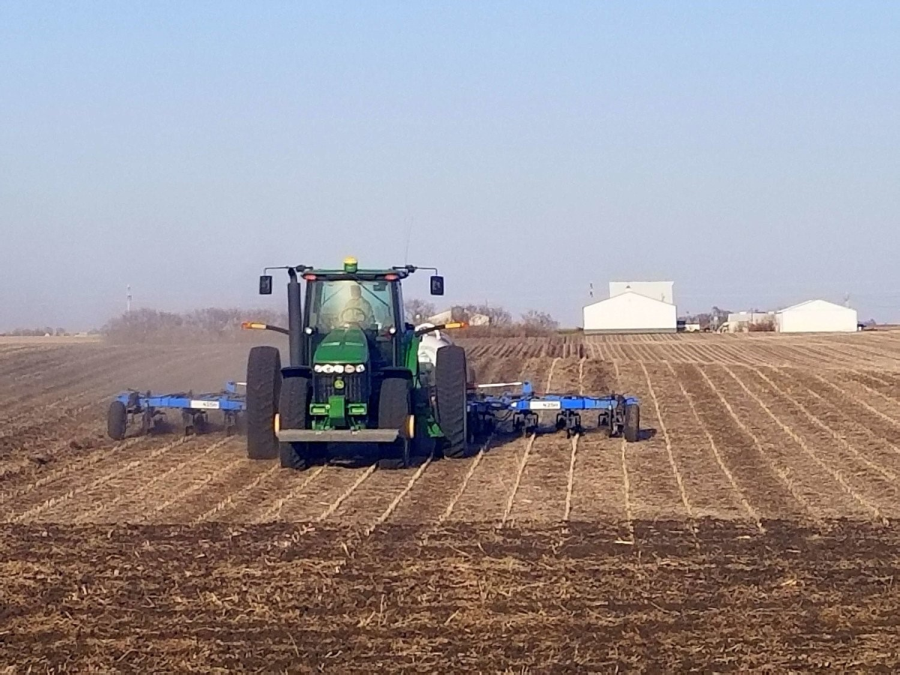

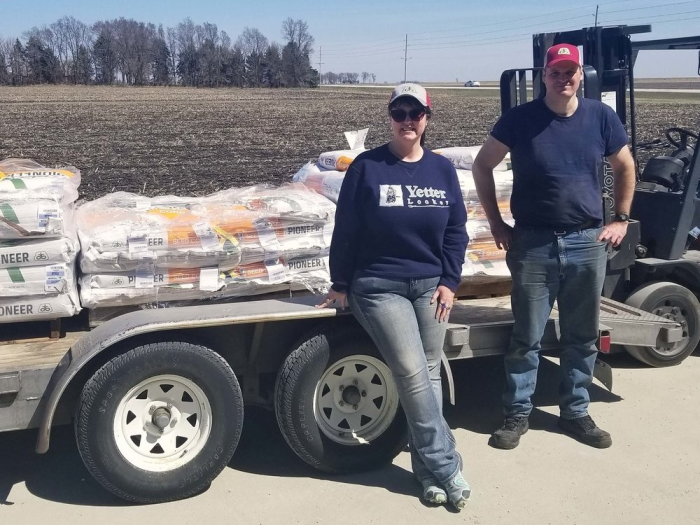
I was starting to wonder if spring would ever get here, especially when the “Great Blizzard of 2018” hit our area the weekend of April 14. It seems like we were enduring a blizzard a week during much of early April. Spring blizzards aren’t all that common, but they sure are nasty. The one that pummeled our part of Calhoun County on April 14 and 15 brought snow, violent winds and ice — a perfect storm to knock out the power. Thank goodness for the generator my dad installed at the farm a few years ago, as it kicked on within seconds of the power going out, and was a lifesaver all weekend.
Some places weren’t so fortunate and had power outages through Monday morning. I’m truly grateful for the linemen who brave horrible weather conditions, from blizzards to the aftermath of tornados, to get the power back on as soon as possible. Our Calhoun County Electric Cooperative Association has served this area well for more than 80 years.
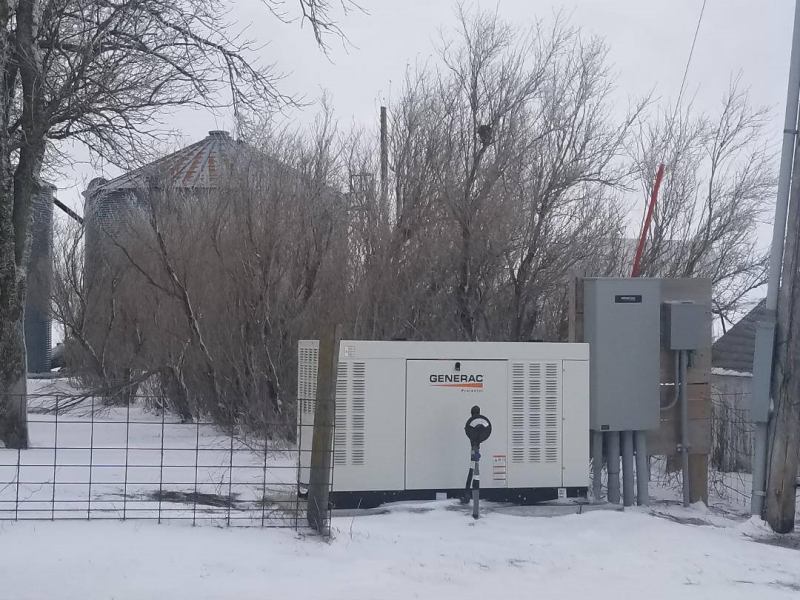
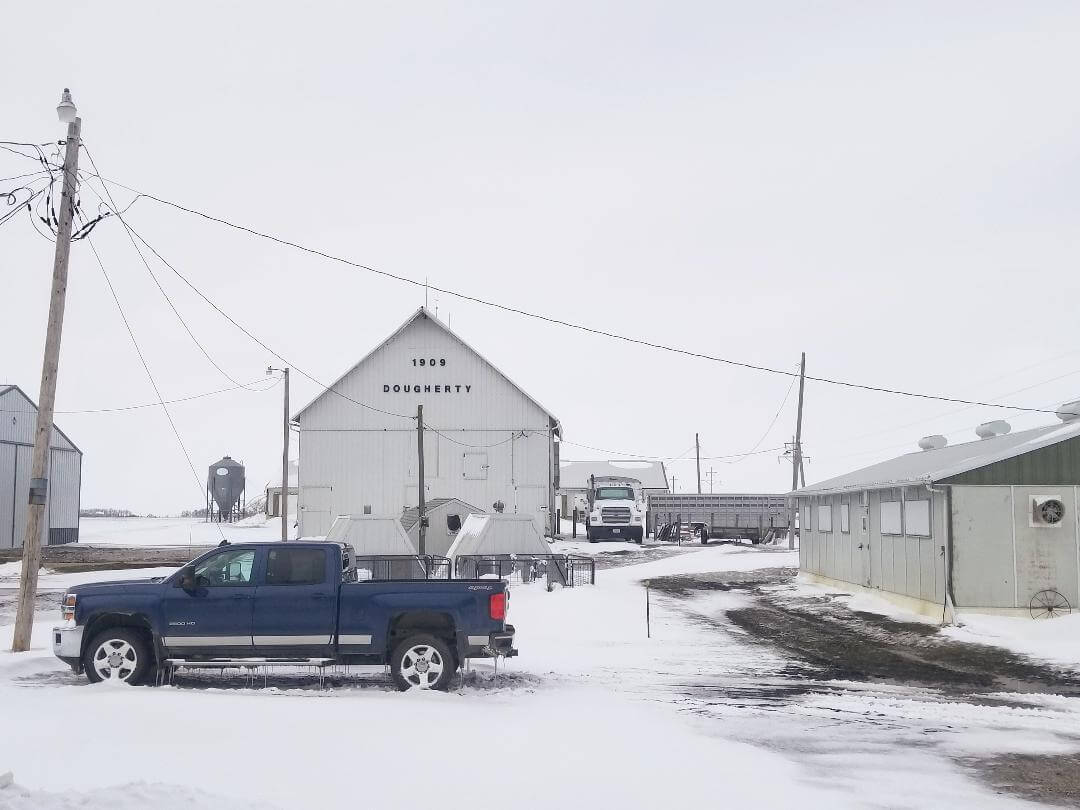
Bringing the Power to Rural America
Did you know that most parts of rural America, as many as nine out of 10 rural homes, had no electrical power until the late 1930s, and sometimes not until after World War II? Imagine your daily life without electricity. No refrigeration. Pumping water by hand. Reading and working under kerosene lamps. At my family’s farm, my grandparents and great-grandparents had the small luxury of a Delco battery plant in the farmhouse basement, but it didn’t provide much more power than running a lightbulb or two in the evening.
The unavailability of electricity in rural areas like mine kept local economies entirely dependent on agriculture. Factories and businesses preferred to locate in cities where electric power was easily acquired. For many years, power companies ignored the rural areas of the nation, even though most towns and cities had electricity around the early l900s.
The idea of providing federal assistance to support rural electrification gained ground rapidly, however, when President Franklin D. Roosevelt signed Executive Order No. 7037 establishing the Rural Electrification Administration (REA).
Within months of REA being passed in 1936, it became evident that established, investor-owned utilities weren’t interested in serving sparsely populated rural areas. But loan applications from farmer-based cooperatives poured in, and REA soon realized electric cooperatives would be the entities to make rural electrification a reality. My local Calhoun County Electric Cooperative Association is a legacy of this member-owned electric cooperative system — and I’m grateful!
Signs of Spring, From Mud Season to Red-Winged Blackbirds
 Despite the blizzard, I knew better weather had to arrive soon, not because of the date on the calendar, but because I’d been seeing red-winged blackbirds. These lively birds with red and gold feathers on their wings are some of the first to appear around here in the spring. To me, they are as much a sign of spring as robins.
Despite the blizzard, I knew better weather had to arrive soon, not because of the date on the calendar, but because I’d been seeing red-winged blackbirds. These lively birds with red and gold feathers on their wings are some of the first to appear around here in the spring. To me, they are as much a sign of spring as robins.
And then, of course, there’s the mud. You know there are five seasons on the farm, right? Summer, fall, winter, spring and mud. After the snow and ice from the April blizzards started melting, we were left with plenty of mud, potholes in the driveway, and vehicles that are impossible to keep clean. One of the jobs you can count on each spring on the farm is the need to fill potholes with crushed rock.
One thing that caught my attention was something out of the ordinary — Mother Nature’s ice sculptures at Black Hawk Lake. One day when we were taking my dad, Jim, for a drive it was a sunny, warm, beautiful day—and there were amazing ice sculptures along the short of Black Hawk Lake in Lake View. I’d never seen anything quite like them. Stunning!
We also took my dad along when my brother Jason and I picked up corn seed from our local Pioneer dealer. It always amazes me how something as tiny as a corn kernel or soybean seed will grow into something so essential to people and livestock.
My Dad and MSA
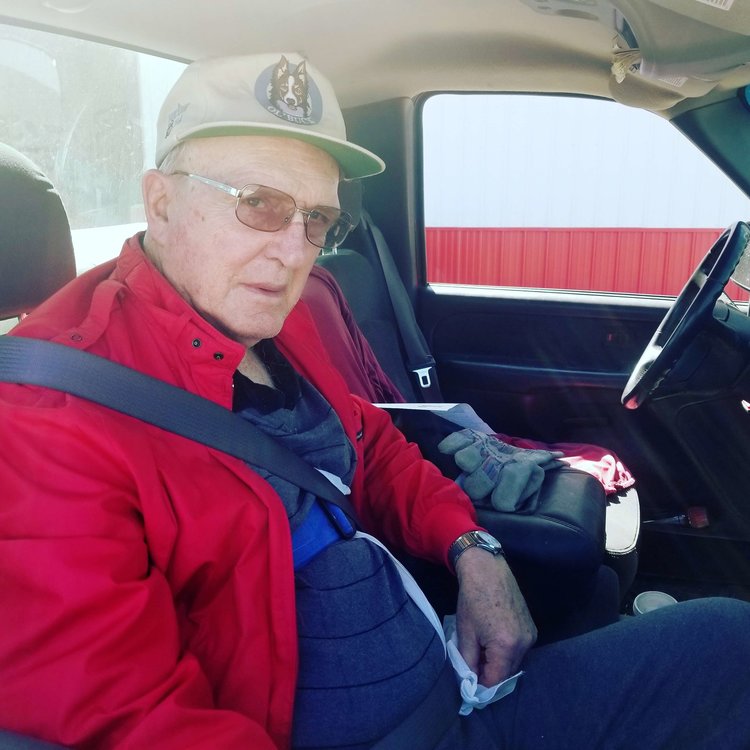 Speaking of my dad, planting season looks a bit different on the farm this year. Some of you may know that he was diagnosed in Iowa City in January 2017 with multiple system atrophy (MSA). This is a rare, degenerative neurological disorder affecting a host of the body’s involuntary (autonomic) functions.
Speaking of my dad, planting season looks a bit different on the farm this year. Some of you may know that he was diagnosed in Iowa City in January 2017 with multiple system atrophy (MSA). This is a rare, degenerative neurological disorder affecting a host of the body’s involuntary (autonomic) functions.
MSA has been called “Parkinson’s on speed,” because it shares many Parkinson’s disease-like symptoms, such as slow movement, rigid muscles and poor balance. Treatment includes medications and lifestyle changes to help manage symptoms, but there is no cure. The condition progresses gradually and symptoms typically develop in adulthood, usually in the 50s or 60s.
There's no known cause for MSA. The progression of the condition varies, but one does not go into remission. Fortunately, there is a miracle drug that my dad takes to help manage his MSA. It just became available in the last few years, and it’s wonderful.
As MSA progresses, daily activities become increasingly difficult. People typically live about seven to 10 years after multiple system atrophy symptoms first appear. However, the survival rate with MSA varies widely. Occasionally, people can live for 15 years or longer with the disease.
That’s why we’re grateful for every day we have with my dad, who will celebrate his 81st birthday in August. Even though he can’t drive the tractor anymore, he still loves keeping up with what’s going on at the farm.
Cool Car Stops by the Farm
We always enjoy having guests stop by the farm. In late April, my brother’s high school buddy, Alex Farley, who now lives in Farnhamville on the east side of Calhoun County, dropped by in his 1976 Oldsmobile Cutlass 442.
Alex’s mom and dad bought the car locally, and it has been in the family for more than 40 years. I’ve always loved its eye-catching red and white color scheme, slant-back grille, chiseled lines, white interior and cool 442 callouts on doors and trunk. It’s a cool, stylish example of Oldsmobile history.
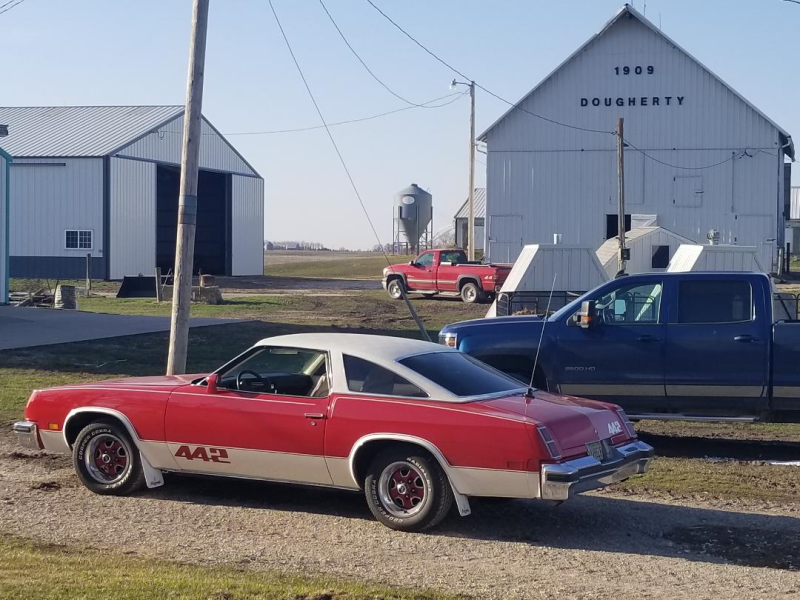
Talking Food and Farming on “Paula Sands Live”
Speaking of history, I was busy in April giving programs, interviews and book signings of my “Culinary History of Iowa” book in Ringsted, Marion and Davenport. I had the chance to appear on the “Paula Sands Live” show on April 13 to promote my program at the German American Heritage Center in Davenport. You can watch the Paula Sands Live video clip here. Please note, by clicking the link you will be leaving a partially funded checkoff site.
As we gear up for gardening and farmers’ markets, we can start dreaming about Iowa-grown veggies! As you’re building your May menu, try my Zesty Sweet Corn and Mozzarella Salad with the recipe below.
I look forward to visiting with you again in a few weeks when I’ll have lots of planting stories to share, my friends!
Sincerely,
Darcy
Zesty Sweet Corn and Mozzarella Salad
Since it’s almost time for gardening and farmers’ markets, I decided to whip up an Iowa-inspired salad with the fresh flavors of spring and summer.
 3 to 4 cups whole-kernel corn (or 4 ears fresh sweet corn)
3 to 4 cups whole-kernel corn (or 4 ears fresh sweet corn)- ½ cup sliced celery
- 1 cup frozen edamame, thawed
- 1 cup cubed smoked mozzarella cheese
- 1/2 cup diced sweet red bell pepper
- 1/2 cup sliced black olives (optional)
- 1 bunch green onions, chopped
- 1/3 cup bottled Italian dressing
1. With a sharp knife, cut kernels from sweet corn cobs (makes about 3 cups).
2. In a large bowl combine corn kernels, celery, edamame, cheese, red pepper, black olives and scallions.
3. Add Italian dressing; toss until well coated.
4. Serve as a main or side dish or on lettuce leaves, if desired.
Yield: 5 cups